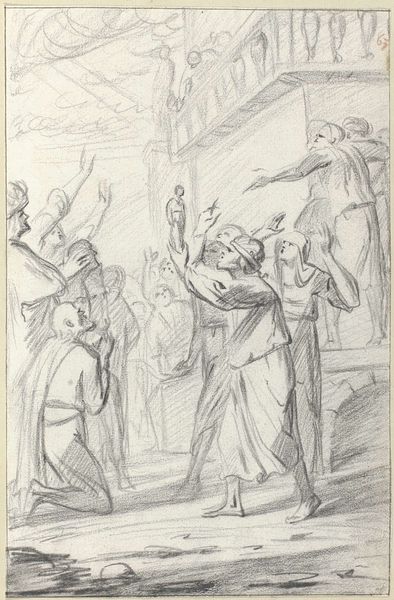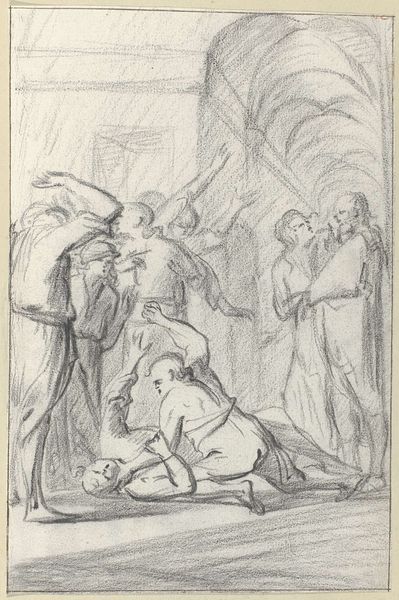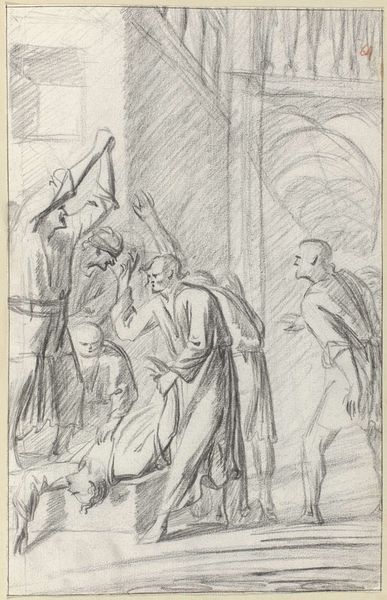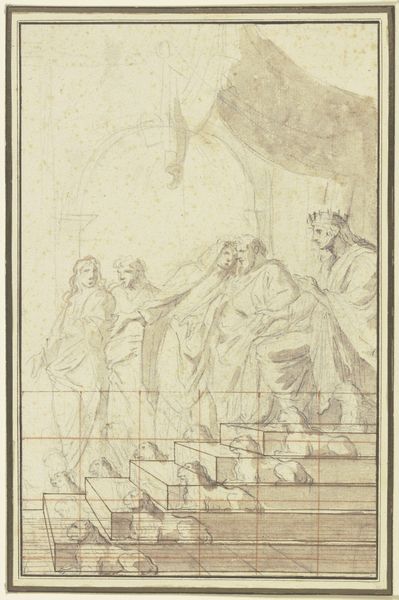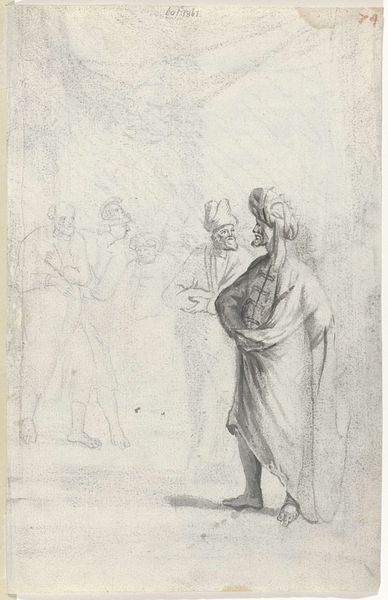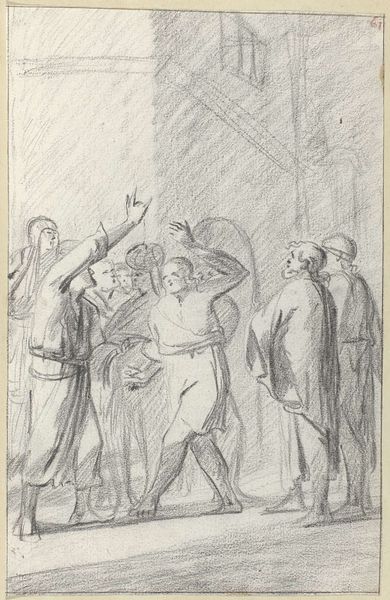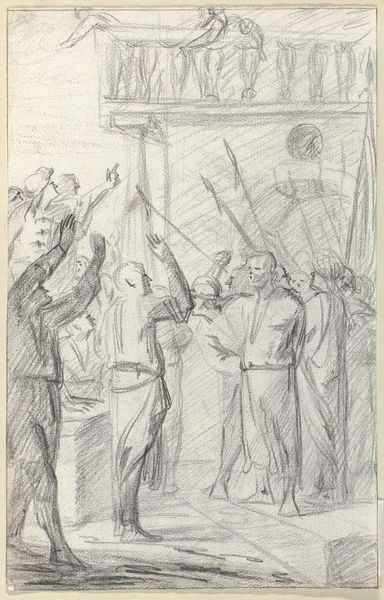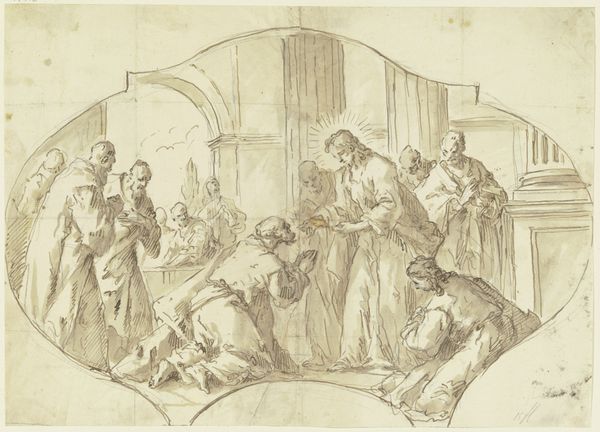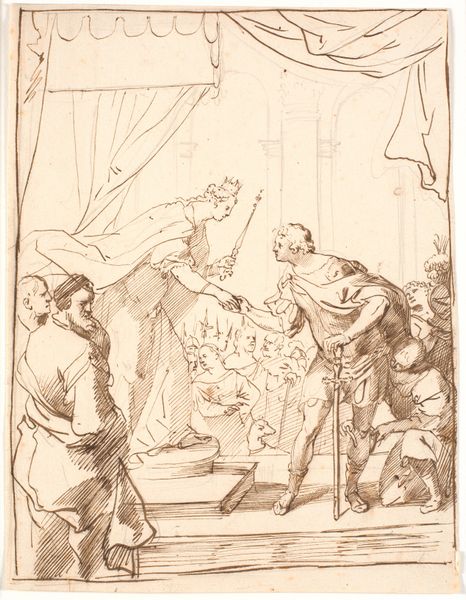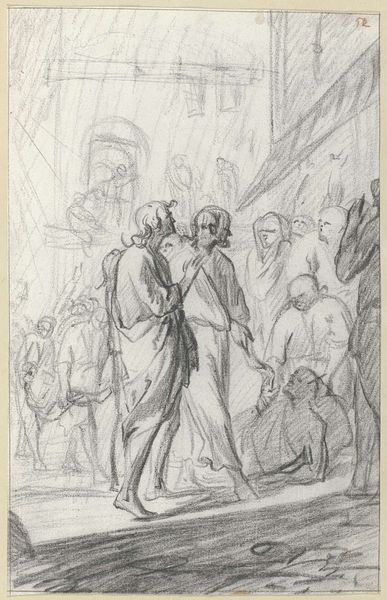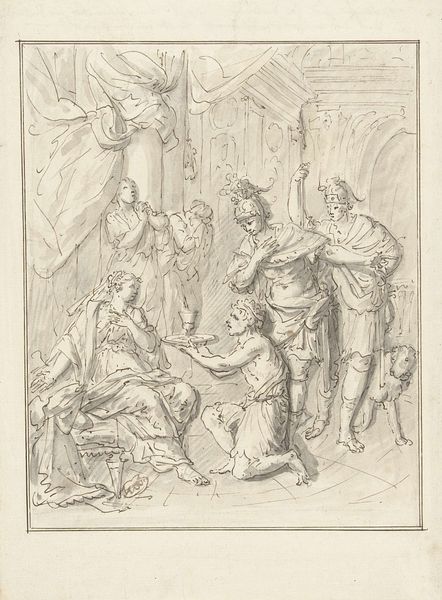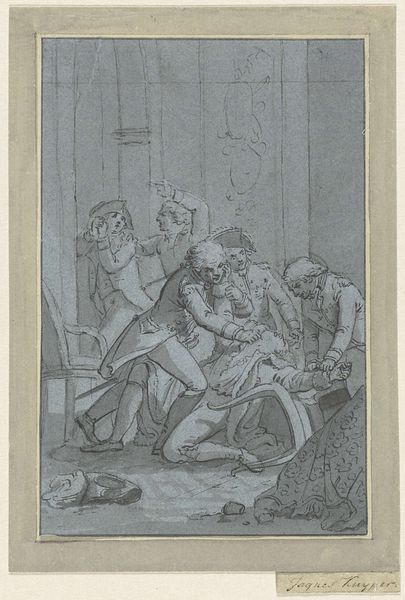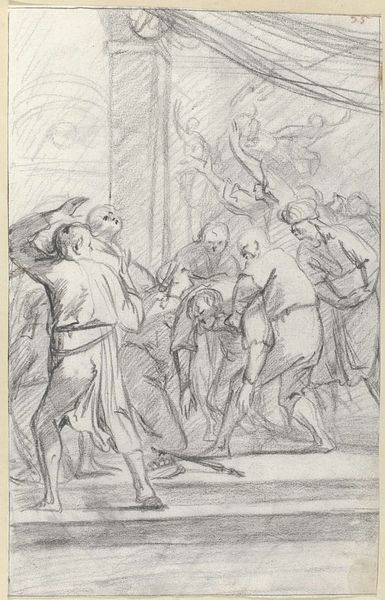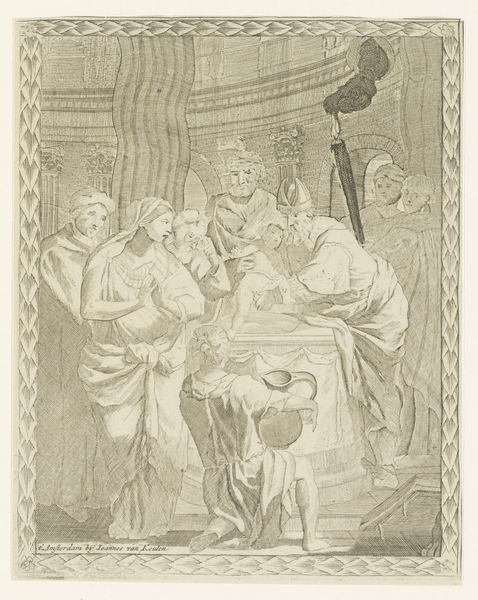
drawing, pencil
#
drawing
#
baroque
#
figuration
#
pencil
#
line
#
history-painting
#
academic-art
Dimensions: height 303 mm, width 197 mm
Copyright: Rijks Museum: Open Domain
Editor: This drawing by Pieter Fransz. de Grebber, made between 1610 and 1652, is titled *Petrus spreekt tot het volk*. It’s a pencil sketch, seemingly a preparatory work, and I'm immediately struck by the dramatic positioning of the figures and the rather ambiguous architectural setting. What's your interpretation of this piece, Curator? Curator: Considering De Grebber’s historical context, we can read this not just as a religious scene but as a reflection on power, persuasion, and social influence during the Baroque period. Peter is depicted not as a saint, but as a speaker, actively shaping the beliefs of the assembled crowd. Notice how their bodies are arranged – some kneeling, some listening intently. Where do you think the women fall in this socio-religious hierarchy? Editor: I hadn't considered that angle. They do seem placed somewhat passively, mostly listening. What I initially took as a neutral historical scene has now become a layered representation of social dynamics. Curator: Precisely. And consider the implied political context of religious gatherings in 17th century Europe, which touches upon issues of social control, conformity, and possibly even dissent. How does the act of drawing itself contribute to or question that power? Editor: That’s fascinating! Maybe the sketch format suggests a certain incompleteness or potential for change, implying that these power dynamics are still in flux. Curator: Indeed. The very act of sketching allows De Grebber to explore these ideas without committing to a finalized, idealized narrative. It becomes a space for interrogation rather than affirmation. Editor: So by focusing on the social and political context, we move beyond a simple biblical interpretation and into a discussion about power and representation? Curator: Exactly! Art history is not just about dates and styles, but about how artworks reflect and shape the societies that create them. Editor: I definitely see that now. Thanks, this really shifted my perspective!
Comments
No comments
Be the first to comment and join the conversation on the ultimate creative platform.
